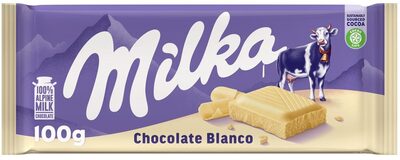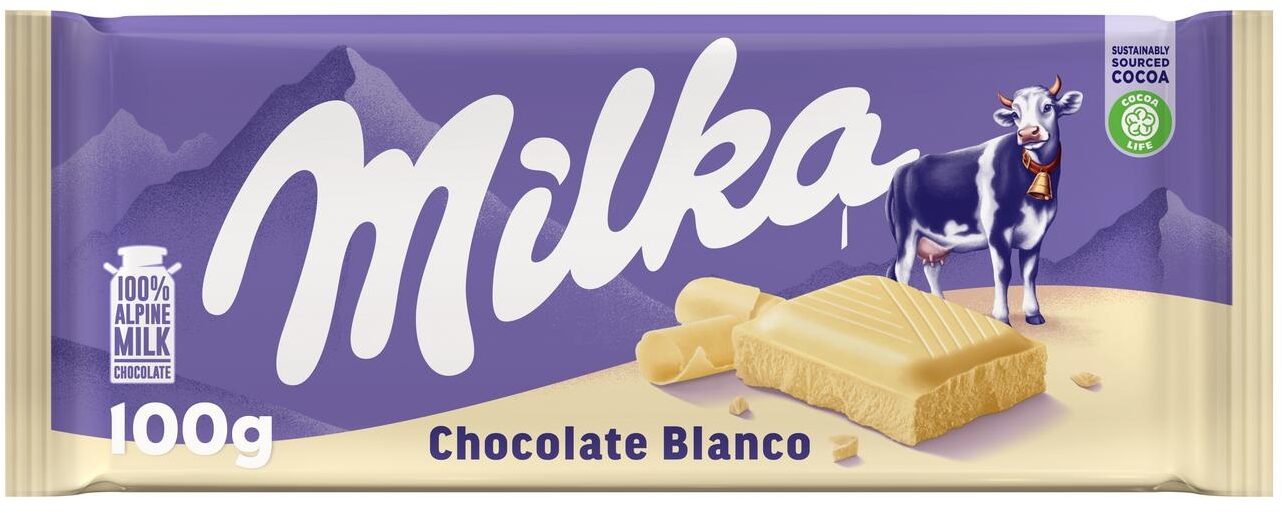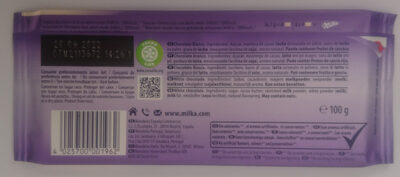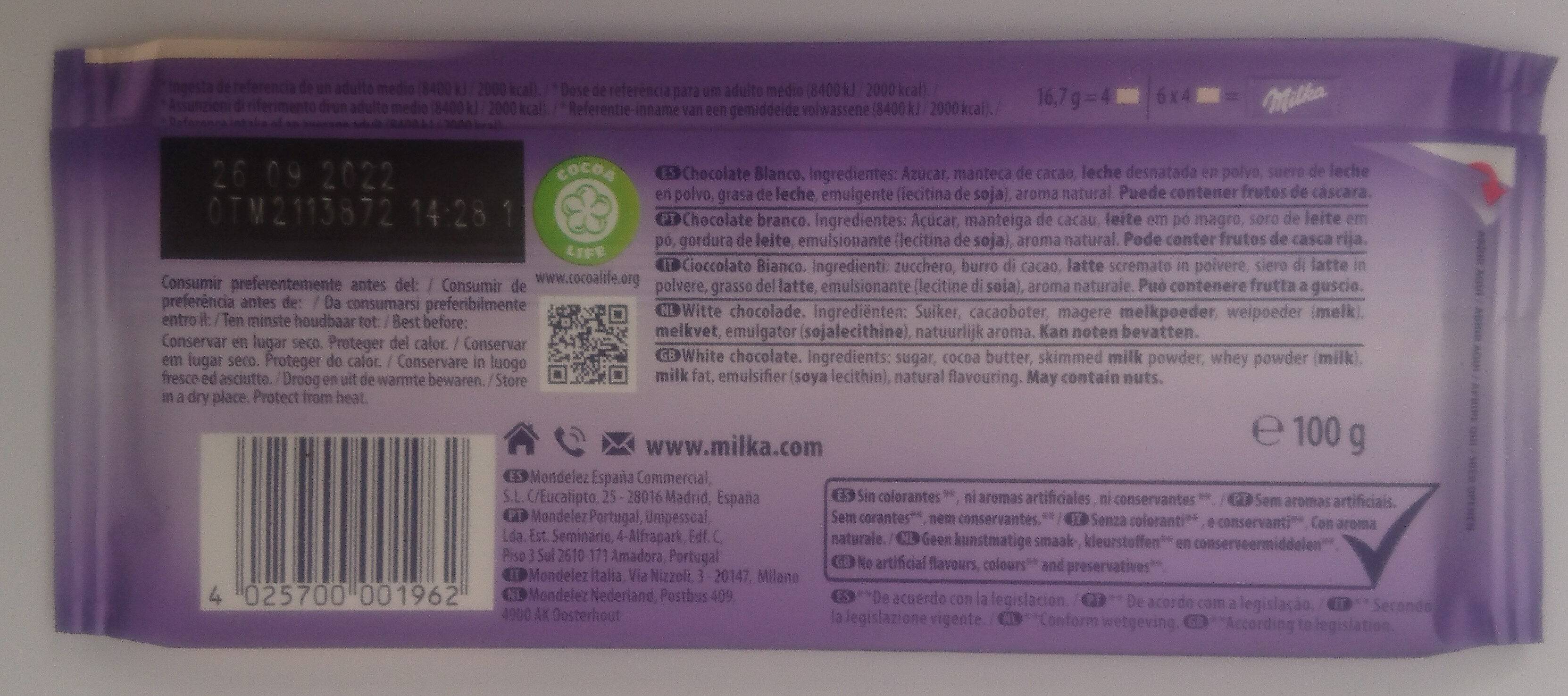Milka bílá - 100g
Aquesta pàgina del producte no està completa. Podeu ajudar a completar-la editant-la i afegint-hi més dades a partir de les fotos ja disponibles, o fent-ne més amb l'aplicació de androide o iPhone / iPad. Gràcies!
×
Codi de barres: 4025700001962 (EAN / EAN-13)
Quantitat: 100g
Empaquetament: Plàstic, en:pp-polypropylene, de:Stück
Categories: Snacks, Aperitius dolços, Cacau i derivats, Aliments congelats, Xocolata, en:White chocolates
Etiquetes, certificacions, premis:
Sense aromes artificials, Punt verd, Sense colorants artificials, Sense colorants ni aromes artificials, Sense colorants
Enllaç a la pàgina del producte en el lloc oficial del productor: https://www.milka.de/produkte/Milka%20Ta...
Botigues: Auchan
Països on es va vendre: Àustria, França, Alemanya, Polònia, Espanya
Matching with your preferences
Entorn
Petjada de carboni
Empaquetament
Transport
Report a problem
Fonts de dades
Producte afegit per beniben
Última modificació de la pàgina del producte per foodless.
La pàgina del producte, també editada per arc2, date-limite-app, ecoscore-impact-estimator, foodlogger12536, foodrepo, fugy, inf, laramba, m8080, moon-rabbit, openfoodfacts-contributors, packbot, prepperapp, pyrka, quechoisir, redspider, roboto-app, scanbot, sebleouf, tacite-mass-editor, thaialagata, wojciech-dopieralski-op-pl, yuka.V0tzK05mc0dndFZhdDgwQjl6bU0yZEpPbVo2SGZqdVZMTk05SUE9PQ, yuka.WWFjNE1aUmZodDRLZ3MwZTVSbjBxc0phbHBYMlUzbm9MT01YSWc9PQ.








